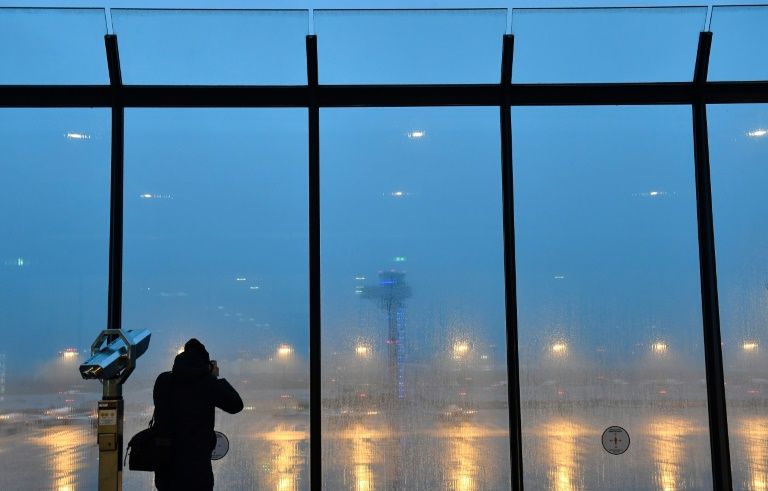Berlin’s beleaguered new airport set for first flights
The EasyJet plane is to fly over from nearby Tegel airport, while the Lufthansa jet is to take off from Munich, airport officials said.
The new airport, which is to replace ageing Tegel, along with Schoenefeld which is next door, is opening nine years late, staggeringly over budget and in the middle of a global pandemic.
As a result, “We will simply open, we will not have a party,” said Engelbert Luetke Daldrup, president of the airport’s management company.
The day will nonetheless be a watershed moment for the project, intended as a symbol of German unity and engineering prowess as the country came together after being divided for nearly half a century.
Economy Minister Peter Altmaier spoke Friday of his “joy and happiness” at the airport finally being able to open.
“It weighed on all of us that there were no prospects of (the airport) getting up and running for many years,” he said. “We are obviously glad that it is now possible.”
– Financial black hole –
Since construction began in 2006, the project has been dogged by one failure after another that turned it into a financial black hole and a national laughing stock.
The airport, located in the southeast corner of the capital, was originally due to open in 2011. Operations are now getting underway in the middle of the worst aviation crisis ever, as Covid-19 restrictions continue to suffocate air travel.
And there’s also the climate crisis: The pressure group Extinction Rebellion has planned acts of “civil disobedience” on opening day to protest the impact of aviation on global warming.
Wood panelling and chrome give the interior of Terminal 1 a 1990s feel, with the “Magic Carpet”, a huge, bright red artwork by American artist Pae White suspended from the ceiling, adding a touch of colour.
The airport, Germany’s third-largest after Frankfurt and Munich, has been designed to welcome 27 million passengers a year, but in November it will likely see only 20 percent of usual air traffic owing to the pandemic.
Terminal 2 is not to open until spring 2021.
About 15 shops and restaurants out of just over 100 will remain shut, while the rest will keep “limited opening hours” because of low traffic, a spokesman told AFP.
– Job losses –
None of this is good news for BER, initially projected to cost 1.7 billion euros ($2 billion) but already beyond the 6.5-billion-euro mark.
The airport has been granted 300 million euros in state aid to help safeguard jobs until the end of 2020.
But the health crisis has nonetheless already affected employment: In late July, Berlin’s airports announced the loss of 400 jobs from a total of 2,100.
Luetke Daldrup hopes the situation will improve starting sometime in the first half of next year.
But the International Air Transport Association (IATA) does not expect global air traffic to reach pre-crisis levels until 2024.
The first passenger plane to take off from BER is slated to be an EasyJet flight to London Gatwick, departing at 6:45 am on November 1.
Tegel, beloved by many Berliners for its unconventional hexagonal design and ease of access, is to welcome its final flight on November 8.
Disclaimer: Validity of the above story is for 7 Days from original date of publishing. Source: AFP.


